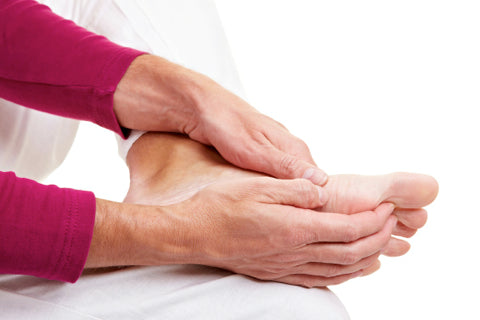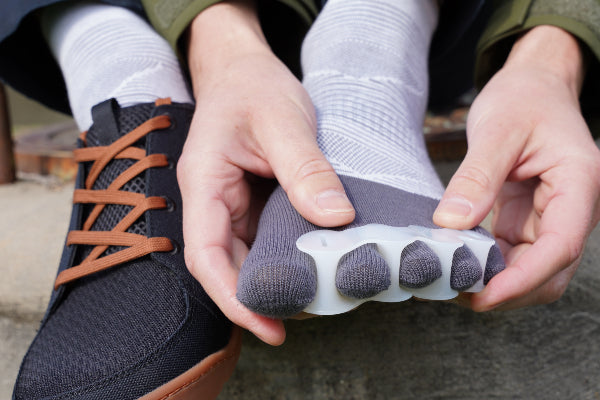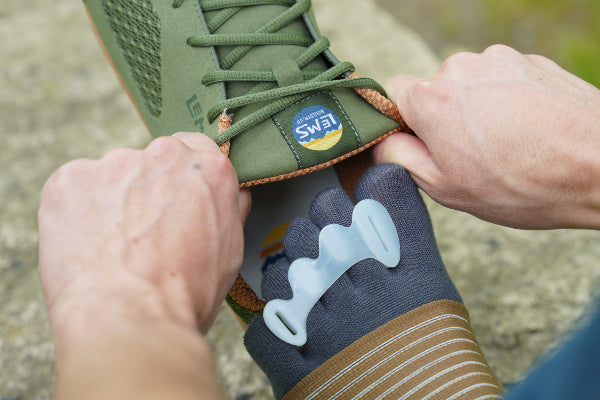Osteoarthritis: Conventional vs. Natural Approaches

In this video, Dr. Ray McClanahan, a sports podiatrist at Northwest Foot and Ankle and the inventor of Correct Toes, discusses the most common causes of foot... Read more

Arthritis: Painful joint inflammation and stiffness.
Arthritis, which literally means “joint pain,” is one of the leading causes of disability among Americans. Arthritis, including arthritis in the foot, toe, and ankle joints, can occur at any age, though certain types of arthritis may be more common in older or younger individuals. There is no cure for this health problem, though there are many treatment options available. Treating arthritis in its early stages may allow a person with this condition to more easily manage symptoms, maintain a high quality of life, and avoid surgery and certain health complications later on.
Three main types of arthritis may cause pain and other symptoms in the foot, toes, or ankle, including:
Common signs and symptoms of foot, toe, and ankle arthritis include:
Foot, toe, and ankle arthritis may be caused by numerous factors, and the underlying cause of the arthritis depends on the specific type of arthritis a person has.
Factors that contribute to osteoarthritis include:
Other health problems—diabetes, Paget’s disease, underactive thyroid—may also increase the likelihood of developing osteoarthritis.
Rheumatoid arthritis is an autoimmune condition whose true cause is unknown. Like other autoimmune conditions, rheumatoid arthritis is a health problem in which a person’s own immune system targets and attacks his or her healthy joint tissues.
Post-traumatic arthritis is caused by direct trauma or injury to the foot, toe, or ankle.
Foot, toe, and ankle arthritis cannot be cured, though many treatment methods, including conservative measures, may be beneficial in controlling the symptoms. Possible treatment techniques or tools include:
We recommend speaking with a healthcare provider about all relevant treatment methods to help control foot, toe, and ankle arthritis-related symptoms.
Disclaimer:
The above content is for educational or informational purposes only and is not intended to replace or augment professional medical instruction, diagnosis, or treatment. Read full disclaimer here.$65.00
$10.00
$14.00
$14.00

In this video, Dr. Ray McClanahan, a sports podiatrist at Northwest Foot and Ankle and the inventor of Correct Toes, discusses the most common causes of foot... Read more

Knee osteoarthritis, or degenerative joint disease, is a common health problem in the United States, especially among the elderly. This health problem, notes the American Academy of... Read more


What’s your advice on how to treat a bone spur that’s on the top of the foot?
Hi, Julie,
Thank you for your question—it’s a really good one. Some foot docs approach this problem in the following way:
They apply a topical local anesthetic over the bone spur in question and cover it with plastic wrap, leaving this setup in place for about 45 minutes. Then, the doc will ask the patient to do an activity that would normally cause pain in the area of the bone spur. If the topical local anesthetic eliminates the pain, it’s likely that the patient has neuritis/neuralgia from the spur irritating their nerve, in which case lacing strategies (e.g., skip technique) can be employed, along with precise shoe stretching. It’s very important in this scenario to avoid any footwear-related pressure on the affected area, at least until the nerve calms down.
If the topical local anesthetic does not eliminate the pain, it’s likely that the pain is related to osteoarthritis, and the patient may benefit from surgical excision of the bone spur, or a selective fusion procedure. Interestingly, bone spurs that occur on the top of the foot are often associated with a big toe that is out of alignment, which creates aberrant loading of the tarsometatarsal joints and, later, osteoarthritis. For this reason, foot-healthy footwear is necessary to permit realignment of the big toe. One sign that there may be significant osteoarthritis present is if there is foot pain when the tarsometatarsal joints are twisted. Radiographs will often provide a lot of helpful information as well.
I hope this info helps, Julie! Please let us know if you have any follow-up questions.
All the best,
Robyn Hughes, ND